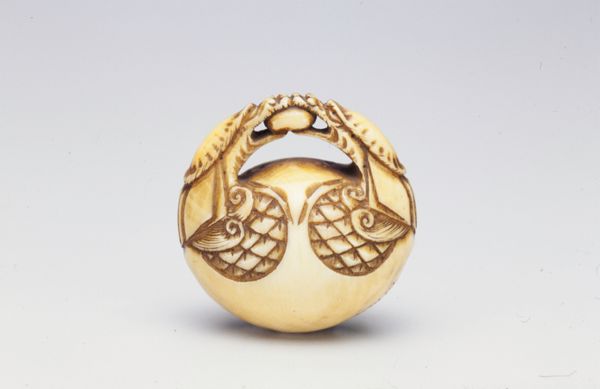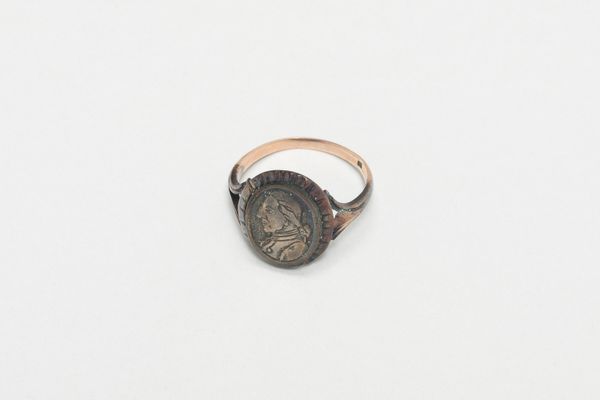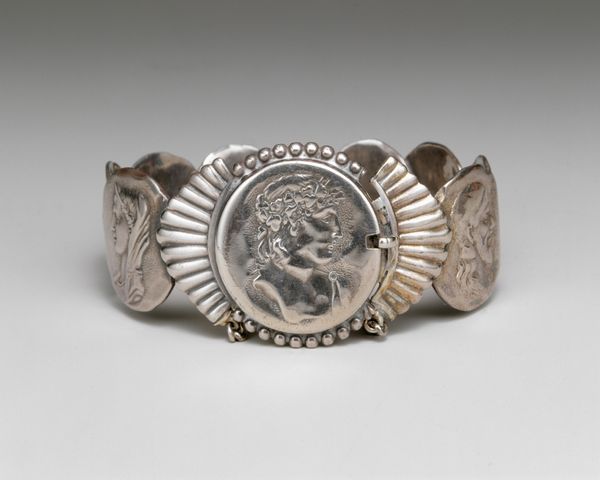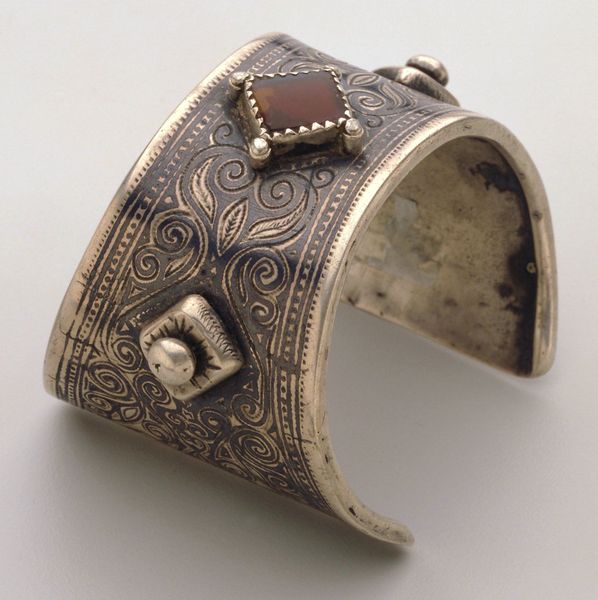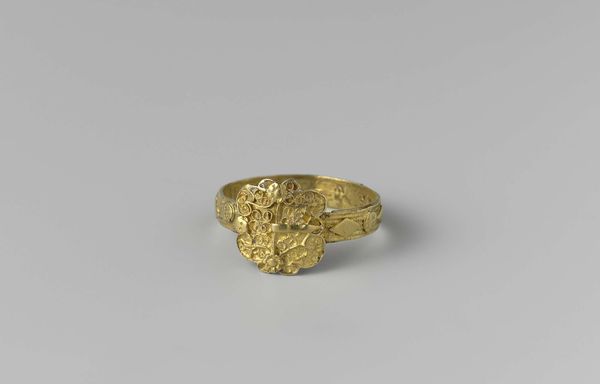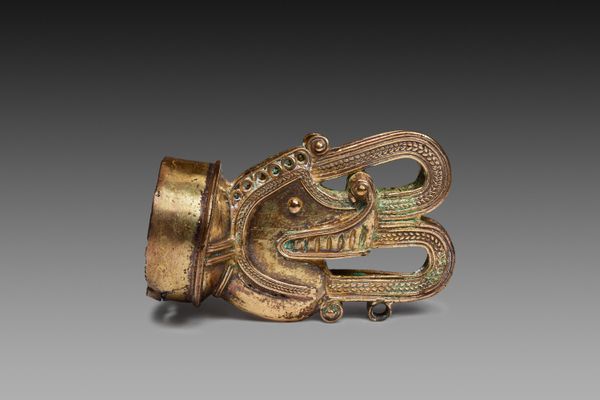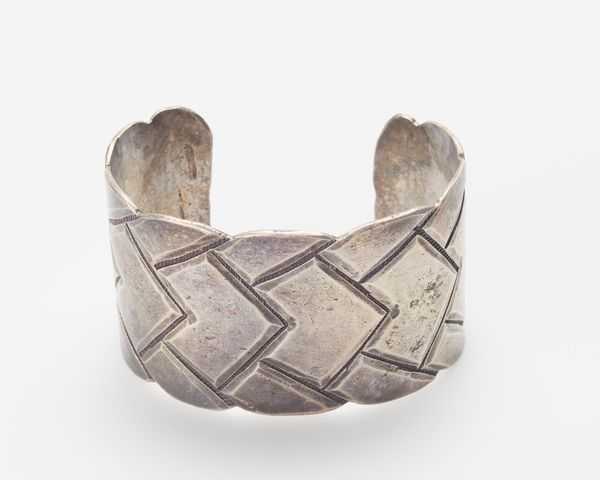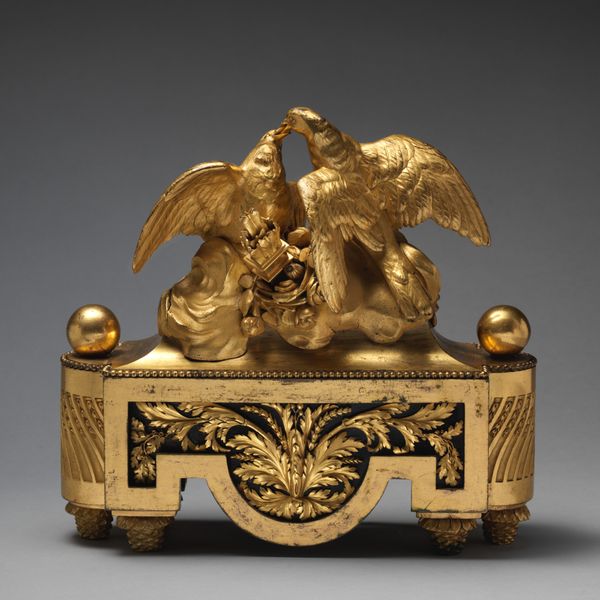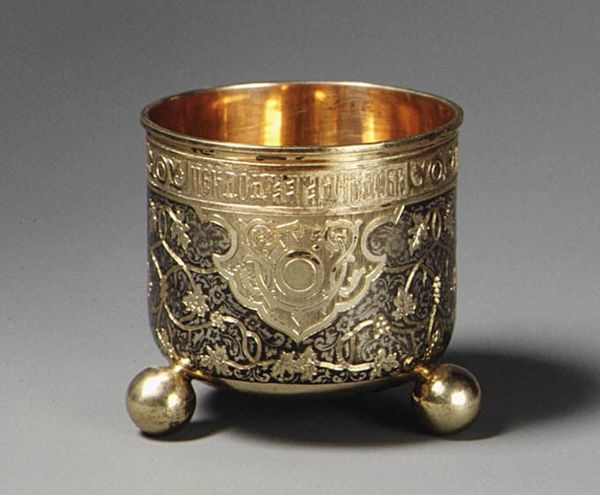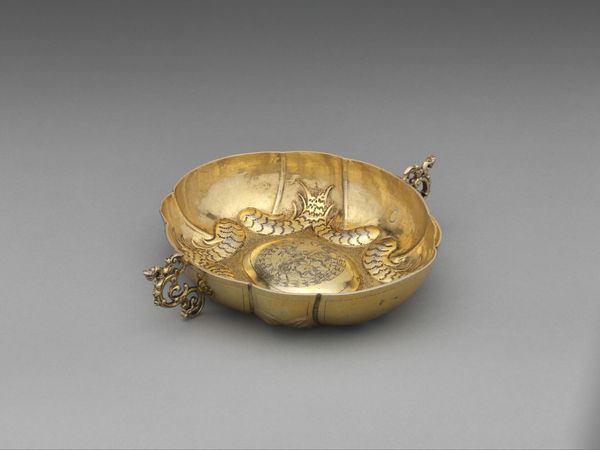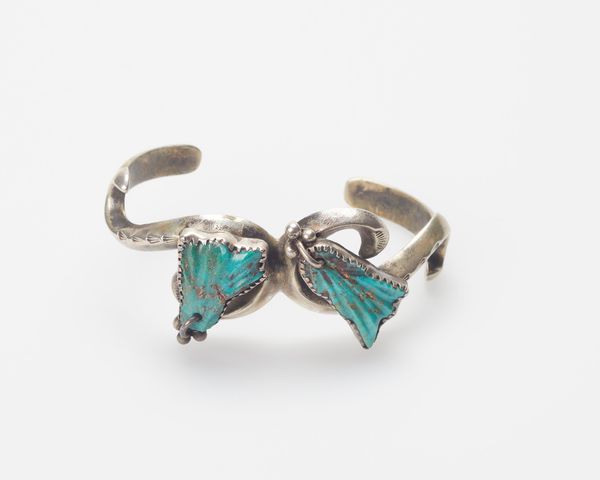
carving, intaglio, sculpture, wood
#
carving
#
intaglio
#
asian-art
#
japan
#
sculptural image
#
sculpture
#
24_meiji-period-1868-1912
#
wood
#
miniature
Dimensions: H. 1 3/16 in. (3 cm); W. 9/16 in. (1.4 cm); L. 1 3/8 in. (3.5 cm)
Copyright: Public Domain
Editor: Here we have a wooden netsuke from the 19th century, intricately carved with household utensils. It’s such a tiny object, yet it contains this whole world within it. What do you see in this piece? Curator: The domestic sphere, compressed and enshrined. The symbolism is rich here. Consider the objects: the broom for cleanliness, the fan for composure. These aren't merely tools; they represent a codified way of being. They reflect the aspirations and values of the home and what it meant to its inhabitants in the 19th century. Do you think there’s a hierarchy to these objects? Editor: Perhaps! The fan feels more elevated, a mark of leisure, while the broom feels… essential, but maybe less valued. The juxtaposition creates an interesting tension. What could that suggest? Curator: Precisely. Think about how these objects would have been perceived in their time. The netsuke as a practical object too, would be suspended from a kimono sash. Each little object carves cultural meaning into something ordinary. Every inclusion carries the weight of cultural memory, revealing domestic life ideals from a specific social stratum in Japan. It also acts as a talisman almost – an identity and way of remembering. Editor: I hadn't thought about it as something so tied to identity! Curator: It really is about creating meaning from mundane objects. The netsuke carves visual language that allows us insight into daily existence and offers clues for comprehending shared past experience and remembrance. I now think differently about miniature art’s relationship to personal storytelling.
Comments
No comments
Be the first to comment and join the conversation on the ultimate creative platform.

